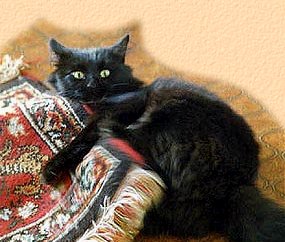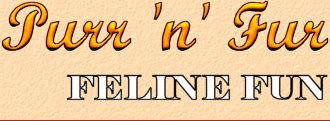The Charlton Cat, Charlton St Peter, Pewsey, Wiltshire
[ see photos here ]
The Charlton Cat has quite a long and interesting history; some of the following information was kindly supplied by the landlord when I visited in 2005.
There was an alehouse on the site for many years before the present building was constructed in 1821, following a fire that destroyed the earlier one. It had been known for several decades previously as the 'Red Lion', but the rebuilt pub was named the 'Poores Arms', from the lords of the manor of the neighbouring village of Rushall. Their coat of arms incorporated two leopards rampant as supports; these may have been the reason that the pub later became informally known as the 'Charlton Cat'. The name was officially changed to that, probably during World War I, and so it remains today (apart from a brief and unsuccessful period as 'The Sweeney' during the mid-1980s). It's been pointed out that the pub is situated in a deep track in the hillside called the 'Charlton Cut', so a corruption of this to 'Cat' is also a possibility as to where the 'cat' came from.
The Charlton Cat is renowned for its association with the poet Stephen Duck, who hailed from the nearby village of Charlton, and a festival in his honour is still held annually. Born in 1705, Duck went to school until the age of 14, when he became a farm labourer — but he nurtured a great desire to improve his mind and continue his learning. By the age of 20 he was married and had a child; but he would work overtime to earn money to buy a couple of books, and try to work harder than others so that he could complete his work early and have half an hour of daylight to read by. A friend who had worked in London was able to get him some more books; he acquired a dictionary and read the whole of Milton's Paradise Lost.
Duck also composed poetry, much of it in couplets, and in 1730 his verse was brought to the attention of Queen Caroline, to whom he was described as 'lately a poor thresher in a Barn in the county of Wiltshire, at wages of 4/6d a week'. The queen approved of his verses, gave him her patronage, and made him a Yeoman of the Guard — appointing him appropriately as the Keeper of Duck Island, in St James's Park. She also paid for him to be educated for the Church. In 1734 Lord Palmerston donated a small field in the village, later called Duck's Acre, and the rent from this paid for a supper for twelve Charlton threshers at the pub each year. This became known as the Duck Feast.
Later Duck became the rector of Byfleet in Surrey, but four years afterwards, in 1756, he drowned himself in the river Kennet, apparently in a fit of madness.
But the Duck Festival remains, held in June, and is thought to be the longest continuously celebrated festival in the world, having never missed a year — even during the world wars — since it was established. The men receiving the benefits must be Charlton born and bred; there's a special hat, which must be worn when drinking three-quarters of a pint of beer, all in one go, from a special mug. Toasts are drunk to the Queen, to Lord Palmerston, and to Stephen Duck.
Note: we're grateful to Mark Flander-Lewis, who wrote in to say there was one (and only one) 'Honorary Duck' who was not a Charlton man: his grandfather Jim Lewis, born in the next village, Rushall. He and his father before him were licensees of the Charlton Cat between 1925 and 1958, and were also the local blacksmiths. Such was Jim's popularity in the villages, and as licensee and blacksmith, that he was permitted to be an honorary member and could join the men of Charlton in the Duck Festival.
>^..^< >^..^< >^..^<
The Kilkenny Cat, Llanelli, south Wales
[ see photo here ]
'To fight like Kilkenny cats' has come to mean to battle until both sides have been destroyed — an all-out, relentless fight to the finish. It derives from the proverbial story of a pair of cats in the ancient town of Kilkenny, Ireland, which fought till only their tails were left:
There once were two cats from Kilkenny;
Each thought there was one cat too many
So they fought and they fit
And they scratched and they bit
Till, excepting their nails
And the tips of their tails,
Instead of two cats, there weren't any!
The most likely source of the tale (although there are others) dates from disputes that took place between the fourteenth and seventeenth centuries, when Kilkenny was divided into Irishtown and Englishtown. The two communities were constantly feuding over their boundaries, and about religion, culture and politics, because the rights and duties of the municipal authorities had never been made clear by statute. So they quarrelled for three centuries, and the lengthy dispute ended up beggaring both sides.
>^..^< >^..^< >^..^<
'Cat and Fiddle' derivation
There are many theories about the origin of the Cat and Fiddle name for pubs, but no one knows for certain which, if any, is correct. One proposal often met is that it is a corruption of a French sign, 'Le Chat Fidèle', which was made to commemorate a favourite cat, but this explanation is not generally accepted. An earlier landlord of the famous Cat & Fiddle inn on the moors above Buxton (near Wildboarclough) distributed a postcard with a poem that offered what is considered to be a much more likely origin. The poem is to be found in the book British Inn Signs and their Stories, by Eric Delderfield, published first in 1966, and it's paraphrased here.
It says that 'in the brave days of old', when England was having one of its fairly frequent wars with France, the French port of Calais had been taken by the English and was being held by forces under the command of a worthy knight called Caton. He was known by the French as 'Caton le fidèle' because of his unswerving loyalty to the king of England; and one of the men who fought with him was a country peasant from the town of Buxton. When the war was over and this man returned home, he built a house on the site of the present inn, from which he sold ale, wine and mead. His business became very successful, but his alehouse had no name. Dreaming one night of his former master Caton, he proclaimed that the house would be named after the knight and called 'Caton le fidele'. This puzzled the local folk, who struggled with the French pronunciation, and their version became 'The Cat and Fiddle'.
An alternative explanation, at least for this Cat & Fiddle, has come to light from one of our correspondents, who sent the following extract from an 1895 publication:
The Cat and Fiddle was built by Mr John Ryle, the father of the present Bishop of Liverpool, who was a banker at Macclesfield and the owner of the Errwood estate. ... a story which is accepted in the locality as being authentic, is that when the building was nearly finished, a friend of Mr Ryle's, who was a member of the celebrated Kit-Kat Club, and was out shooting with him near the building, jokingly suggested that the inn should be called the Kit-Kat; 'or rather,' he added, 'as the place is high enough for a cow to jump over the moon, as one did in the old nursery rhyme, why not call it the Cat and Fiddle.' 'So it shall be,' said Mr Ryle, and it was named so accordingly.
Photos of the Cat & Fiddle near Wildboarclough can be seen here; but signs from a dozen pubs of the same name are pictured in our galleries altogether. Using the links below either browse or go to the gallery index to pick them out more easily.
>^..^< >^..^< >^..^<
Browse through the sign galleries
>^..^< >^..^< >^..^<
If you know of any more pub signs showing cats, have details of sign or name changes,
or can contribute any anecdotal information, please
!
Additions, amendments or suggestions for this section always gratefully received.
Drop in at our Facebook page

>^..^< >^..^< >^..^<



